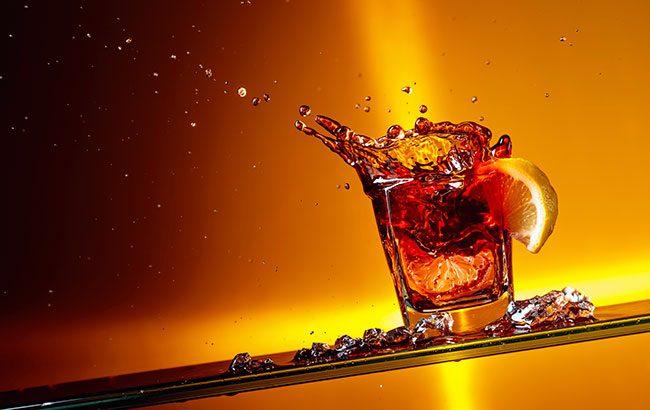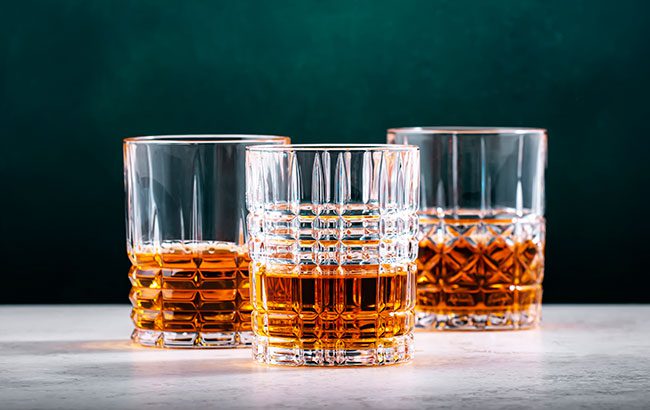Is American whiskey in trouble?
By Mark JenningsIs American whiskey going under, or simply correcting itself after two decades of growth? We spoke to industry experts to assess the situation.

*This feature was originally published in the October 2025 issue of The Spirits Business magazine.
In the past year, a string of headlines has rattled Kentucky and beyond: Uncle Nearest in receivership; Kentucky Owl filing for bankruptcy; Garrard County Distilling in court; Limestone Farms Distillery facing multi-million-dollar liens; and even Brown-Forman closing its Louisville cooperage. Most recently, Independent Stave Company announced major job cuts at its Kentucky Cooperage in Lebanon. For an industry that spent two decades in near-continuous growth, the optics are alarming.
Behind the drama, however, people in the industry caution against panic. “I don’t see it as a bust,” says industry veteran Steve Beal. “I see it as a realignment.”
Beal, who has watched several cycles come and go, points to an “ocean of Bourbon” laid down during the boom years, fuelled by money and investor optimism. The warehouses may be full, but that doesn’t mean drinkers have abandoned American whiskey.
Instead, the market looks increasingly split. “It’s an interesting kind of bifurcation,” says Adam Edmonsond, a Master of Whiskey, and director of education at the Council of Whiskey Masters. “Entry-level products are suffering a decline at the same time as premium products are still growing.”
That divide, backed by IWSR data showing US whiskey’s global volume growth flatlining to 2029 while value ekes out small gains, may be the clearest signal yet that the party has ended – but the hangover is not universal.
Leaps and bounds
To understand the current anxiety, it helps to remember how far American whiskey has come. Just two decades ago, today’s icons were gathering dust. “I was buying Pappy by the case, at cost,” recalls Monique Huston, vice-president of Winebow’s spirits portfolio. “There was no Bourbon Trail, no romance. These were industrial plants.”
From that low base, Bourbon and rye rode a wave of cultural rediscovery. Cocktail culture provided an entry point, finishes and limited edition releases created excitement, and auctions turned once-ignored brands into objects of desire. Huston says during Covid-19 “the ‘cool dads in the cul-de-sac’ got into whiskey, and collectability exploded”.
The boom encouraged outsized bets. In recent decades, Beal recalls warehouses sprouting up at unprecedented speed: “Production more than quadrupled. Everyone thought growth would go on forever.”
Figures from the Kentucky Distillers’ Association support this – Bourbon production skyrocketed by 475% between 1999 and 2022, with 14.3 million barrels ageing by 2023.
Beneath those numbers sat a powerful shift in consumer psychology. “If someone bought you Pappy 23 at US$500, you had to say it was great,” Huston remembers. Price became a proxy for quality, and scarcity created its own mythology.
The secondary market amplified the effect. Baller Whiskey from California’s St George Spirits began as a quirky one-barrel project for a ramen shop but quickly appeared on shelves for US$400 a bottle. “False premiumisation is toxic,” says master distiller Lance Winters. St George responded by scaling production and cutting RRP to US$50 – a rare act of defiance against collectability culture. As Winters puts it: “We don’t make whiskey to collect. We make it to drink.”
That psychology is now colliding with tougher economics. Higher interest rates make debt-funded expansion riskier, and small declines in sales can tip ambitious projects into crisis. “Over-optimistic, debt-funded expansions are now unsustainable with higher rates,” says Edmonsond. “Even a modest dip can blow up the operation.”

The results are visible: Garrard County Distilling was forced into receivership after a US$250m build, Luca Mariano Distillery went bankrupt within a year of opening, and Limestone Farms Distillery was mired in lawsuits and liens before a drop was distilled. These stories matter less for the individual names than for what they reveal: a wave of distilleries funded more by financial engineering than by consumer loyalty.
Even the supply chain is bending. In April 2025, Brown-Forman shuttered its Louisville cooperage. In August, Independent Stave Co confirmed more than 100 layoffs at Kentucky Cooperage, consolidating operations to one shift. Beal also mentions warehouse projects that have stalled mid-construction. “You can see the slowdown in wood and concrete as much as in whiskey,” he says.
Signs of strain
For distributors, the signs of strain are clear. “Too many small brands tried to scale [to a] national [level] too quickly,” says Huston. “They wanted to be in New York, LA, Chicago, Miami – but they hadn’t even secured loyalty at home. If you’re not the top artisanal brand in your home state, you’re missing the obvious.”
Edmonsond agrees shelf space is a brutal choke point: “The big traditional producers will weather storms. For smaller entrants, it’s not getting liquid into bottle that matters – it’s getting it on the shelf.”
This middle-tier pressure often decides survival. Huston frames Winebow as “the largest of the small, the smallest of the large” – consultative selling, storytelling, not just shifting cases. “We see educated consumers pushing back on inflated packaging and price. That resistance is where the correction is happening,” she adds.
If over-production is one part of the puzzle, over-pricing is another. “Whiskey became overpriced because of its sexy, collectible, investment aura,” says Beal. Bottles were priced high “just because they could be”, creating an unstable bubble.
Winters argues whiskey’s fetishisation has done long-term harm. As Dave Smith, head blender and distiller at St George Spirits, says: “Whiskey culture became like comics – obsessive, but the novelty burned out. Barrel finishes and single-barrel picks were exciting, but now it’s just more noise.” Huston adds: “It’s not trading down, it’s a pricing correction. Consumers are smarter now. They don’t accept US$40 liquid dressed up as US$70 with a heavy bottle and gold foil.”
Generational shifts deepen the challenge. Gallup data shows the percentage of Americans under 35 who drink has fallen from 72% to 62% in two decades.
“After Covid, there are simply fewer social occasions,” says Edmonsond. “Some consumers shifted to cannabis, RTDs [ready-to-drink], or NA [no alcohol]. But we’re also seeing a barbell market – people buy less, but better.”
Huston insists younger drinkers aren’t lost but are discovering alcohol differently. “Their discovery happens on TikTok, not in the trade press. They don’t care if a brand is Diageo-owned or independent. They care if it looks fun.” The romance of neat pours in crystal Glencairn glasses, she adds, is fading; whiskey is becoming more about socialising, not ceremony. That change is cultural as well as generational. St George’s Smith notes: “The culture of whiskey geekdom has worn itself out. People cycle through categories. They may move on to agave or craft cocktails, but whiskey needs to keep offering genuine reasons to come back.”
Agave’s rise is particularly stark. Huston points out that Tequila and mezcal are taking up shelf space that once belonged to whiskey. Retailers who once begged for Bourbon allocations are now chasing the latest agave releases. This fatigue doesn’t mean whiskey is obsolete, but it does force producers to rethink innovation. “A lot of what’s been offered recently is the emperor’s new clothes,” says Winters. “If the whiskey doesn’t have a reason to exist, it won’t last.”
Then there is American single malt. For years, advocates have promoted this subcategory as the next growth engine. Its official recognition by the TTB (Alcohol and Tobacco Tax and Trade Bureau) in 2024 was hailed as a milestone. But opinions are mixed on its real potential. “Quality is now on par, and it’s less capital-intensive than Bourbon,” says Beal. Edmonsond is optimistic: “Guardrails are good. Big company validation – like Diageo’s acquisition of Balcones – will create halo effects.”
Confused consumers
However, not everyone agrees. “It hasn’t changed anything for us,” says St George’s Winters, who has been laying down single malt for nearly 30 years. “The fear is that the rules could stifle experimentation.”
Huston is blunter still: “It does not move the needle sales-wise. Consumers expect ‘American Scotch’ and are confused. Bourbon and Scotch drinkers don’t convert easily.”
IWSR data confirms the ambivalence: the American single malt subcategory grew by 5% in volume between 2019 and 2024, but is forecast to remain flat through to 2029.
International markets add another layer of complexity. IWSR figures show the top five export markets for American whiskey by volume are Germany, the UK, Japan, Australia and Poland; by value they are the UK, Australia, Germany, Poland and Brazil.

Edmonsond notes tariffs remain a wildcard. “India has made incremental moves, and that market is exciting,” he says. “But in Canada, even if regulations ease, there’s a lingering patriotic sentiment against American products. These things suppress demand,” he adds, reflecting on Canadian store boycotts of American liquor in retaliation against US president Donald Trump’s tariff threats.
Beal sees echoes of the Scotch industry’s struggles with tariffs during Trump’s trade wars. “Politics can put a brake on momentum overnight,” he warns.
Despite the turbulence, no one sees the category collapsing. “The heart is beating strongly,” insists Beal. “There will be closures, but this is not a wipe-out.” Edmonsond believes the largest producers will weather the storm most easily, with shelf space and repeat purchases acting as choke points for smaller entrants.
Meanwhile, Winters sees resilience in independence. “We have no venture capital, no growth-at-all-costs investors. Make compelling products, have reasonable expectations for growth, and you’ll survive.”
All agree the next phase will require more discipline and less hype. For Edmonsond, that means a “renaissance in blending”, as excess liquid is repurposed into premium SKUs and consumers develop more appreciation for the blender’s art. He also sees scope for differentiation in grains, fermentation times, high-quality casks, and higher ABVs. Beal’s prescription is simple: focus on quality. Huston predicts the next big trend will be affordability, while Winters puts it bluntly: “Make whiskey to be drunk, not collected.”
The boom may be over, but American whiskey is not dead. The industry is rebalancing, shaking out excess, and learning hard lessons about debt, pricing and authenticity. For those with the patience to play the long game, the future remains wide open.
American whiskey data from IWSR
- 2019-24 global CAGR (volume): US whiskey +2%; Bourbon +3%; rye +5%; single malt +5% (<1% of total).
- 2019-24 global CAGR (value): US whiskey +5%; Bourbon +6%; rye +9%; single malt +8%.
- 2024-29 forecast (volume): flat overall (0%); Bourbon +1%; rye +1%; single malt 0%.
- 2024-29 forecast (value): +1% overall; Bourbon +2%; rye +1%; single malt +1%.
- Price tiers (2024 volume share): premium 42%; standard 36%; value 9%; super-premium and ultra-premium grew fastest 2019-24.
- Top export markets (2024) by volume: Germany, UK, Japan, Australia, Poland. By value: UK, Australia, Germany, Poland, Brazil.
Industry insights
As the industry faces a drop in demand, what strategies are you using to safeguard growth and stability?
Ryan McFarland – chief commercial and strategy officer, Drinksology Kirker Greer
“We are focusing on building long-term resilience through differentiation, brand storytelling, and global market development. While domestic demand for American whiskey has eased, we see pockets of momentum in international markets for brands with distinctive styles and heritage. With Bowsaw American Whiskey, we are highlighting expressions that showcase our coopers and blenders, helping the brand stand out in a crowded category and resonate with consumers seeking authenticity and character. Investment in education and advocacy is also key. Alongside this, we are managing distribution deals to support sustainable growth rather than overexposure. By strengthening brand identity, diversifying our reach and staying attentive to shifting consumer preferences, we are confident in safeguarding stability for the years ahead.”
David Valentine – head distiller, Old Dominick Distillery
“Some of the large companies in the industry are facing demand challenges. We are seeing demand grow, particularly in our estate whiskies. Our strategy is to make a variety of high-quality products that can each stand on their own. Right now, Tennessee whiskey, Bourbon, and wheat whiskey are all growing products for us.”
Related news
World Spirits Report 2025: American whiskey
